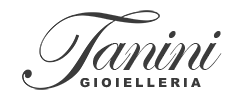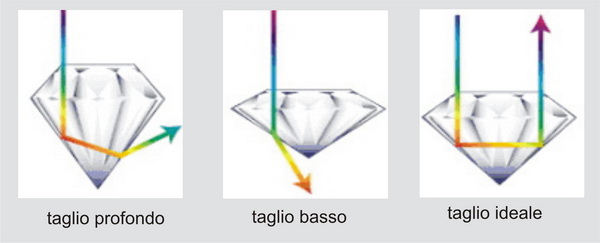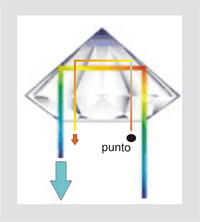How to recognize a diamond
There is a lot said about the methods that can help us recognize whether a diamond is real or not.
The best known is certainly the "glass test": if the diamond is mounted on a ring it is sufficient to rub it on a glass and we will obtain a nice scratch on the glass and no damage to the diamond.
Below, we describe a lesser-known, but certainly original, method.
However, we must highlight that even diamonds produced in the laboratory have reached a level of composition and quality identical to natural diamonds, from which they are indistinguishable (See article). Therefore the following test only helps us to distinguish fakes or imitations.
|
It is necessary to highlight that this verification is only suitable for non-set and brilliant-cut diamonds. This cut has been designed to obtain maximum "brilliance", ensuring that the light rays that hit the gem come out from the upper part of the gem itself, breaking down, moreover, into the colors of the rainbow and thus creating the spell that belongs to her. The result will therefore be achieved provided that the gem has been cut according to "ideal proportions". The explanation of how to recognize the diamond must be preceded by a few explanatory notes on the behavior of light (refraction and reflection) in the brilliant cut diamond. Let us therefore observe the behavior of a ray of light coming from the upper part of the stone (called the "table").
As you can see, if the diamond has been cut respecting the "ideal measures", all the light rays that strike the upper part (table), penetrate the gem and them escape from the same part. And here is the method that allows us to determine whether a brilliant cut diamond is a real diamond and its proporsioni cutting are ideal.i.
Consequently, observing the brilliant from his back, the point will be completely invisible.. The spire of the gem we appear completely non-transparent, as if it were composed of polished steel. If the point were to be visible, such as observing it through a magnifying glass, we would be facing an artifact or a stone which is not a diamond, or in front of a brilliant cut diamond without compliance with the "porporsioni ideal". |


